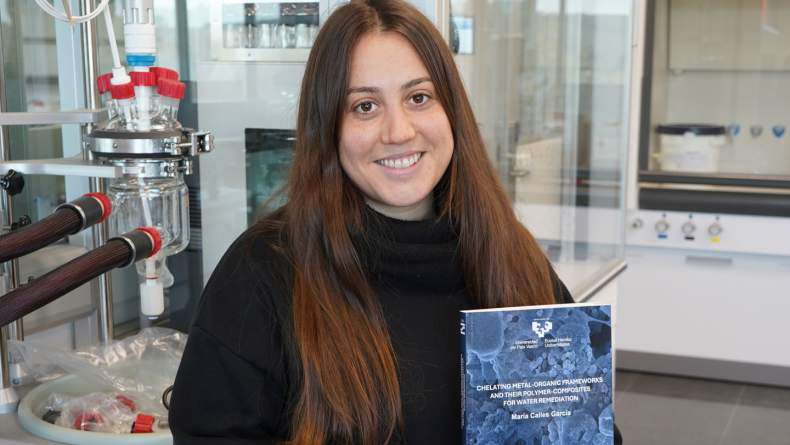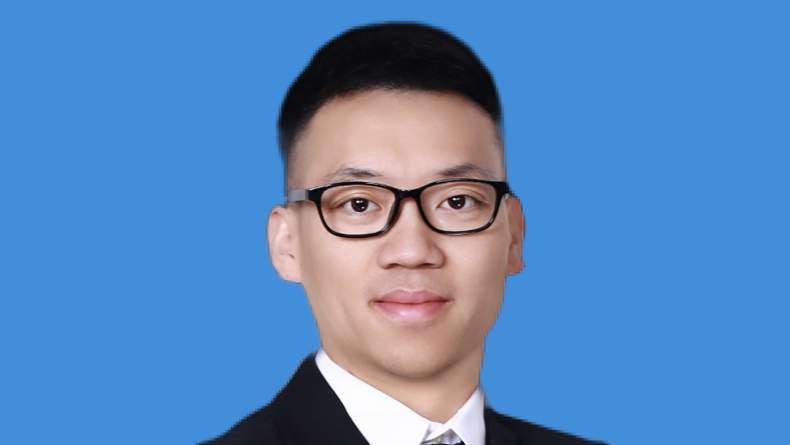BCMaterials Fortnightly Seminar #76 Eduardo Fernández - Roberto Fernández

EDUARDO FERNÁNDEZ
(BCMATERIALS)
GMI sensors in flexible substrates
TBA
ROBERTO FERNÁNDEZ
(BCMATERIALS)
Composite silver vanadium oxide hydrogels and nano-films for environmental remediation and antimicrobial coatings
Nanostructured silver vanadium oxides (SVO) and vanadium oxides (VO), and concretely β-AgVO3 nanoribbons have received considerable attention in the last decade. One of the most amazing consequences of the crystallization of this 1D nano-structures is that β-AgVO3 nano-ribbons can self-assembled into inorganic hydrogels, establishing a 3D non-covalent cross linked framework, which traps water within its pores.
Herein, we report a facile and fast method for the synthesis of nanostructured SVO and slightly reduced VO hydrogel composites with the (β-AgVO3)@(V5+1.6V4+0.4O4.8) formula, hereafter SVO@VO. Moreover, the pollutant sorption capacity, nano-thin film deposition, and antimicrobial activity will be described.
Depending on the concentration of the initial hydrogel, after drying it, several different nano and mesoporous structures are obtained. The mesoporous structure of xerogels is a key point if their potential applications are considered. The capture capacity of the hydrogels and xerogels against several dyes and heavy metals has been proved, with sorption capacities as large as 150 mg/gr for positive dyes, and 600 mg/gr reactive capture of iodine form water. More interestingly, depending on the presence of vanadium oxide nanoribbons on the hydrogels there is a selective adsorption of certain negative charged dyes. As the silver vanadium oxides have been proved to be very effective antibacterial agents we have processed the hydrogels as thin films following different approaches. First, section of controlled thickness of hydrogels have been dried at 80ºC on cellulose filters to obtain regular thin films of 10 µm. Giving a step forward, the hydrogels has been sprayed in glass supports. The thickness of the SVO@VO films has been controlled by accumulative spraying steps, obtaining thin films with thickness from 1 µm to 200 nm. Antimicrobial activity against gram positive and gram negative strains have been proved both in powdered samples and in 10 microns thin films.
Related news
María Calles, New Doctor of BCMaterials
We would like to congratulate María Calles García for obtaining her PhDs in Materials Science and Technology from the UPV/EHU. On December 4 made a brilliant defense of her thesis titled ‘Chelating…Invited Talk with Barcelona Microelectronics Institute’s researchers (December 3)
On December 3 at 12:00 PM, in the Martina Casiano Auditorium in Leioa, BCMaterials will host senior researchers Antón Guimerà and Xavier Illa from the Barcelona Microelectronics Institute (IMB-CNM,…Invited Talk by Liu Yao on Lithium-Metal Batteries (December 2)
Next Monday, December 2, Liu Yao, professor at the Shanghai Institute of Applied Physics, will give an invited lecture at BCMaterials entitled ‘Li-Metal Batteries: From Liquid to Solid-State’. The…Success of BCMaterials’ Annual Workshop on Critical Materials
The 2025 edition of BCMaterials’ annual workshop gathered nearly one hundred participants on November 19 in Leioa to review the latest advances and discuss critical materials, their applications, and…



